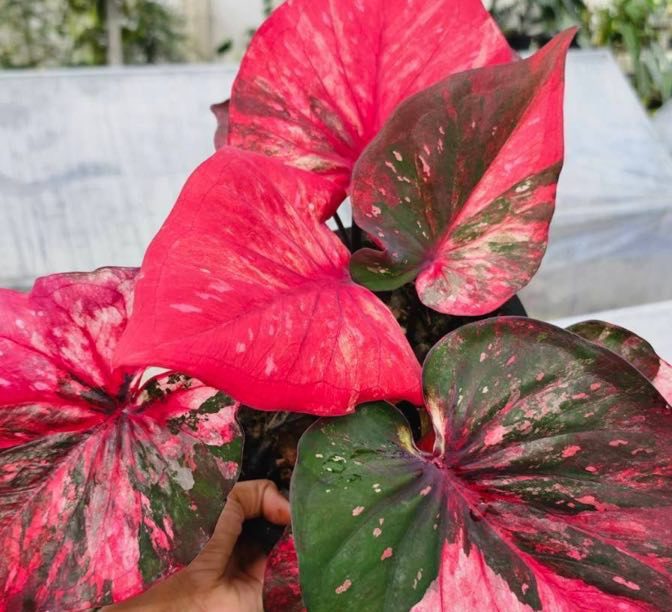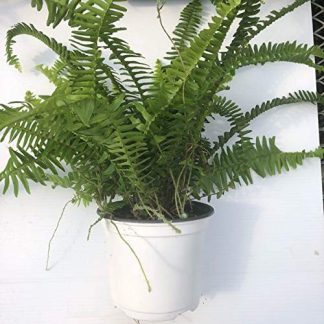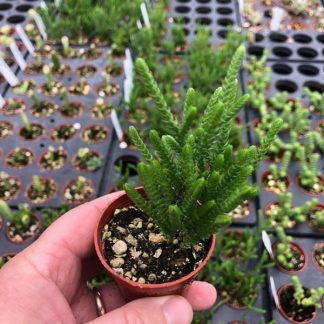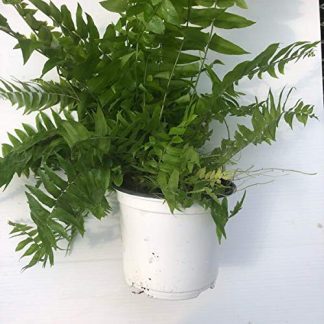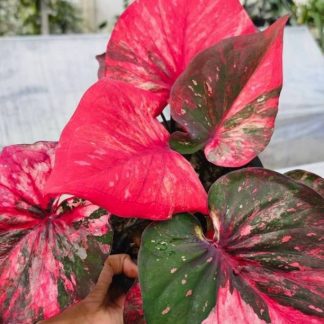Description
Caladium ‘Manee Lomphet’
The Caladium ‘Manee Lomphet’ is a show-stopping ornamental plant adored for its heart-shaped leaves and tropical flair. Known for its vivid colors and intricate patterns, this variety belongs to the Caladium genus—a group celebrated for lush, decorative foliage and shade-loving nature. Whether you’re brightening up shaded garden beds, adding life to patio containers, or elevating indoor décor, ‘Manee Lomphet’ delivers stunning impact with minimal care.
Striking Features of ‘Manee Lomphet’
-
Vibrant Foliage
Large leaves in bold crimson red and pink with rich green edges and delicate veining. -
Shade Tolerant
Thrives in partial to full shade, ideal for woodland gardens, patios, and indoor displays. -
Compact Growth
Reaches 12–18 inches tall, perfect for smaller spaces or mixed plantings. -
Seasonal Color Show
Provides brilliant foliage from late spring through fall. -
Low Maintenance
Easy care requirements make it suitable for beginners and experienced gardeners alike. -
Tropical Charm
Adds lush, exotic texture to both outdoor and indoor settings.
How to Grow and Care for Caladium ‘Manee Lomphet’
1. Location and Light
-
Outdoors: Plant in partial to full shade; direct sun can scorch delicate leaves.
-
Indoors: Place near bright windows with filtered or indirect light.
-
Temperature: Prefers warm conditions between 65–85°F (18–29°C); protect from frost.
2. Soil and Planting
-
Soil: Well-draining and rich in organic matter. A mix of peat, compost, and perlite works well.
-
Planting Tubers: Position the pointed end up, 2 inches deep, spaced 8–12 inches apart.
-
Containers: Use pots with drainage holes and high-quality potting mix.
3. Watering and Humidity
-
Moisture: Keep soil consistently moist but not soggy; avoid drying out.
-
Indoors: Water when the top inch of soil feels dry; watch for root rot.
-
Humidity: Prefers high humidity; mist regularly, use pebble trays, or place in humid rooms.
4. Fertilizing
-
During Growth: Feed every 4–6 weeks with balanced, water-soluble fertilizer (e.g., 10-10-10).
-
Organic Options: Compost tea or slow-release organic fertilizers also work well.
-
Dormancy: Stop feeding in late fall when foliage dies back.
5. Pruning and Maintenance
-
Remove yellow or damaged leaves to encourage new growth.
-
In cooler climates, allow foliage to die back naturally before lifting tubers for storage.
6. Propagation
-
By Tubers: Divide healthy tubers during dormancy. Ensure each section has a growth point.
-
Store divisions in a dry, dark place and replant in spring.
7. Pests and Diseases
-
Common Pests: Aphids, spider mites, and mealybugs; treat with neem oil or insecticidal soap.
-
Diseases: Overwatering can lead to root rot; maintain proper drainage and avoid wet foliage.
8. Winter Care
-
Indoor Protection: Bring potted plants indoors before frost.
-
Tubers: Dig up outdoor tubers after foliage dies back; dry and store in a cool, dry place.
Design and Decorative Uses
-
Shaded Borders: Perfect for adding bold color along pathways or under trees.
-
Container Gardens: Works beautifully in patio pots, planters, or hanging baskets.
-
Mixed Plantings: Combine with ferns, hostas, or impatiens for layered, lush displays.
-
Indoor Displays: Brightens darker interiors with tropical foliage in decorative containers.
Troubleshooting Common Issues
-
Yellowing Leaves
Cause: Overwatering or lack of nutrients.
Solution: Adjust watering schedule and fertilize regularly. -
Brown Leaf Edges
Cause: Low humidity or underwatering.
Solution: Increase humidity and keep soil evenly moist. -
Stunted Growth
Cause: Poor soil or insufficient light.
Solution: Replant in nutrient-rich soil and provide brighter, indirect light.
Why Choose Caladium ‘Manee Lomphet’?
This variety is a true standout for shaded spaces. Its lush foliage in crimson, pink, and green adds vibrancy where many plants struggle to shine. Easy to grow, low-maintenance, and perfect for containers or garden beds, ‘Manee Lomphet’ is an ideal choice for gardeners at any level.
Bring this tropical beauty into your space and enjoy a burst of color from spring to fall. With proper care, it will return year after year, rewarding you with its unique charm.

